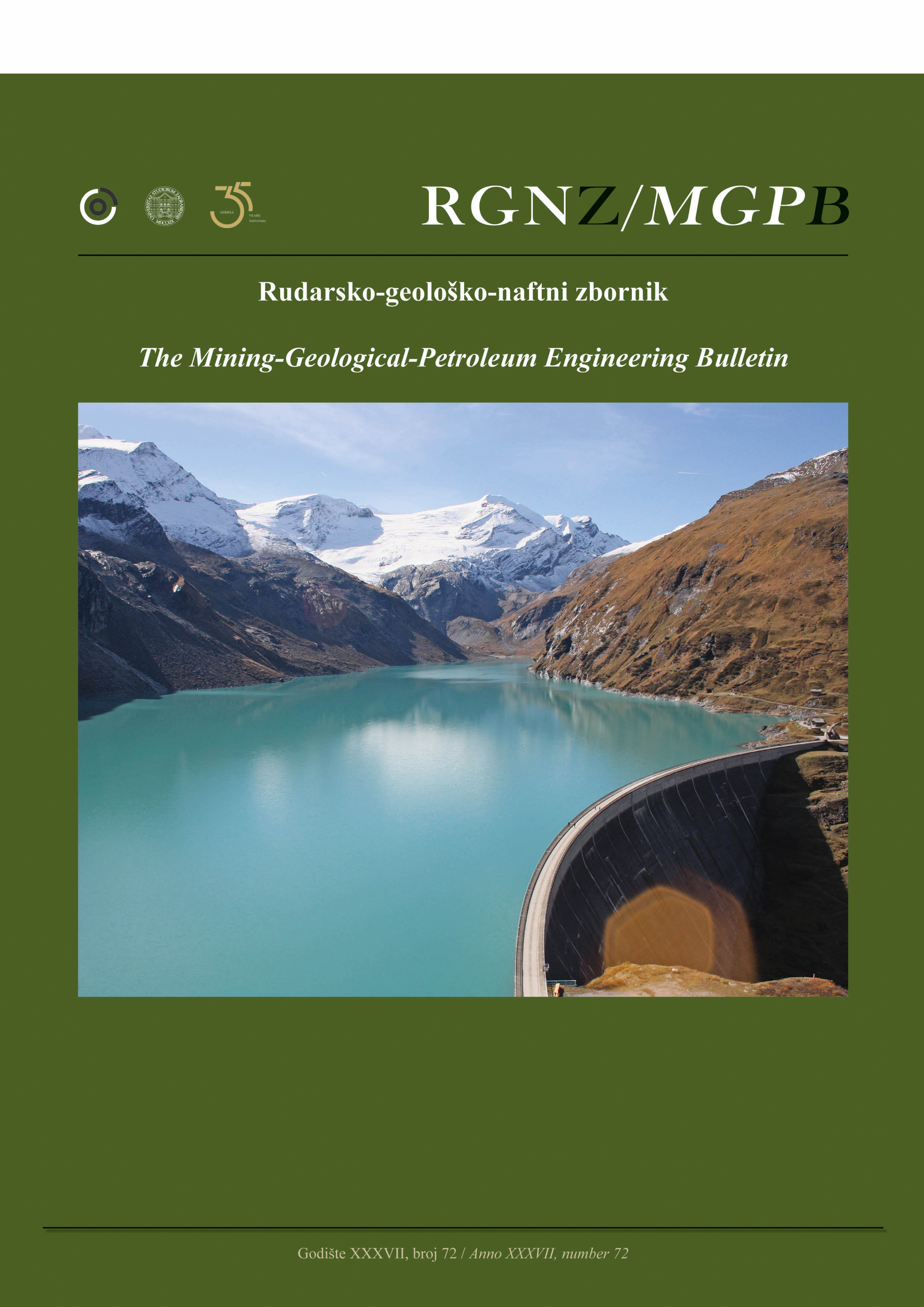Middle-Late Miocene Tidal-related Deposits of the Binio Formation: the Sedimentary and Stratigraphic Records during Inversion of the Central Sumatra Basin, Indonesia
DOI:
https://doi.org/10.17794/rgn.2025.1.10Keywords:
Binio formation, tidal sand ridge, basin inversion, Central Sumatra Basin, sequence stratigraphyAbstract
The distribution of tidal-related deposits can be controlled by structural growth. This structural growth can be reflected, for example, by inversion structures in a back-arc basin. An example of such a structure is found in the Central Sumatra Basin (CSB), Indonesia. However, there are limited detailed studies using 3D seismic, well, and core data to understand how structural growth controls sedimentary processes and tidal deposit distribution in the CSB. This study utilizes these data to investigate the sedimentary processes and distribution of the Middle-Late Miocene Binio Formation, which was deposited during basin inversion. Sedimentological analysis, sequence stratigraphy, and Root Mean Square (RMS) attribute analysis were conducted on these data. Sedimentological analysis of the core data revealed the presence of tidal sand body and open marine facies. Furthermore, by integrating gamma-ray log and laboratory data, parasequences bounded by flooding surfaces were identified. The stratigraphic framework showed that the tidal sand body occurred before and after maximum flooding surfaces, forming transgressive and regressive tidal sand ridges. RMS attribute analysis indicated a consistent NW-trending orientation of these ridges near the flooding surfaces, implying the influence of a NW-trending tidal current, and a NE-trending paleo-shoreline near the Barisan Mountain, which affected sedimentary distribution and paleogeography during the Middle-Late Miocene. Additionally, the investigation of the relationship between ridges and reverse faults revealed that the ridges were likely controlled by tectonic activity. This study highlights that the temporal and spatial evolution of the ridges in the CSB was driven by the interaction between sediment supply and accommodation space, likely influenced by reverse fault growth and sea-level variations.
Downloads
Additional Files
Published
Issue
Section
License
Copyright (c) 2024 Aurio Erdi, Afrizon Setiawan, Ismail Zulmi, Alan Rene Inabuy, Rifati Hanifa Az Zahra, Eric Edwin, Ivan Praja Andhika, Dany Auliansyah, Edward Wijaya

This work is licensed under a Creative Commons Attribution 4.0 International License.
Creative Commons-BY
Authors who publish with this journal agree to the following terms:
In agreeing this form, you certify that:
- You read the ethical codex of the RGN zbornik available at journal web.
- You submitted work is your original work, and has not previously been published and does not include any form of plagiarism.
- You own copyright in the submitted work, and are therefore permitted to assign the licence to publish to RGN zbornik.
- Your submitted work contains no violation of any existing copyright or other third party right or any material of an obscene, libellous or otherwise unlawful nature.
- You have obtained permission for and acknowledged the source of any illustrations, diagrams or other material included in the work of which you are not the copyright owner.
- You have taken due care to ensure the accuracy of the work, and that, to the best of your knowledge, there are no false statements made within it.
- All co-authors of this submitted work are aware of, and in agreement with, the terms of this licence and that the submitted manuscript has been approved by these authors.
Publication licence
You retain copyright in your submitted work, according to journal license policy (CC-BY). By signing this form you agree that RGN zbornik may publish it under the publication licence. In summary the licence allows the following:
Anyone is free:
- To copy, distribute, display, and perform the work.
- To make derivative works.
Under the following conditions:
- The original author must always be given credit.
- The work may not be used for commercial purposes.
- If the work is altered, transformed, or built upon, the resulting work may only be distributed under a licence identical to this one.
Exceptions to the licence
In addition to publishing the work printed under the above licence, RGN zbornik will also enable the work to be visible online.
The journal editorial can change the licence rules anytime but it cannot retroactively restrict author(s) rights.


